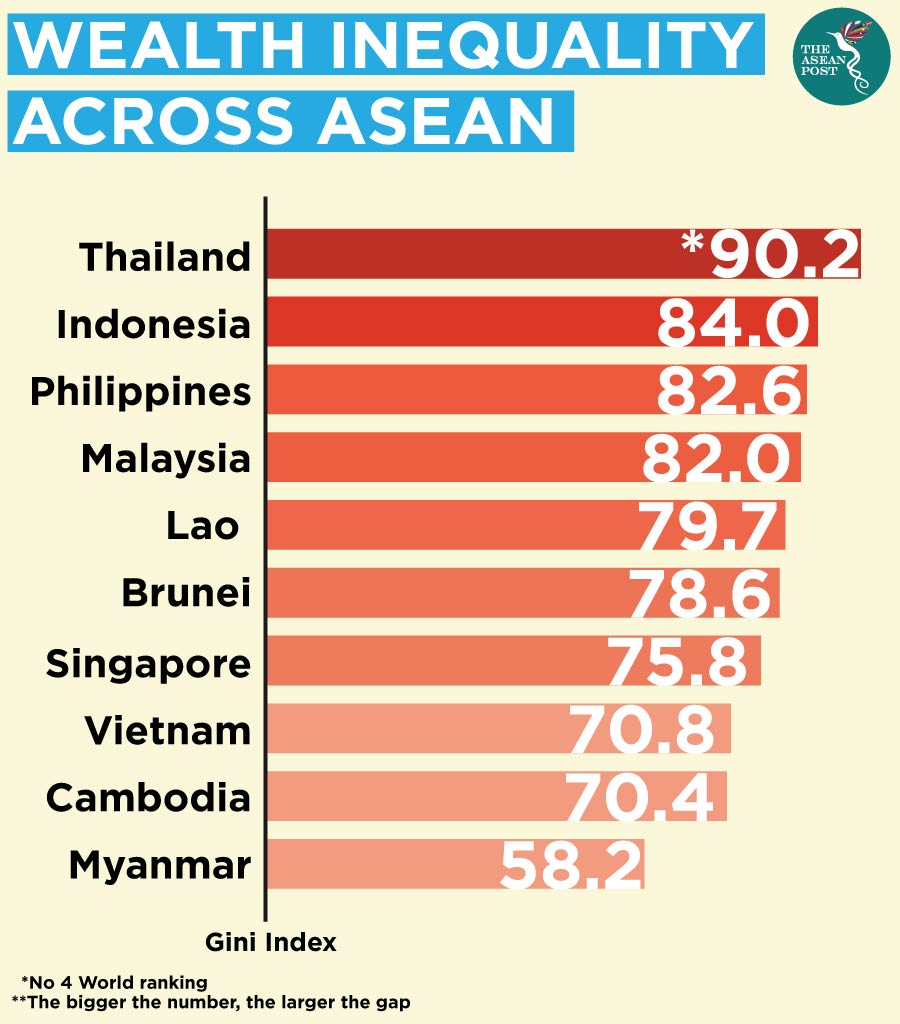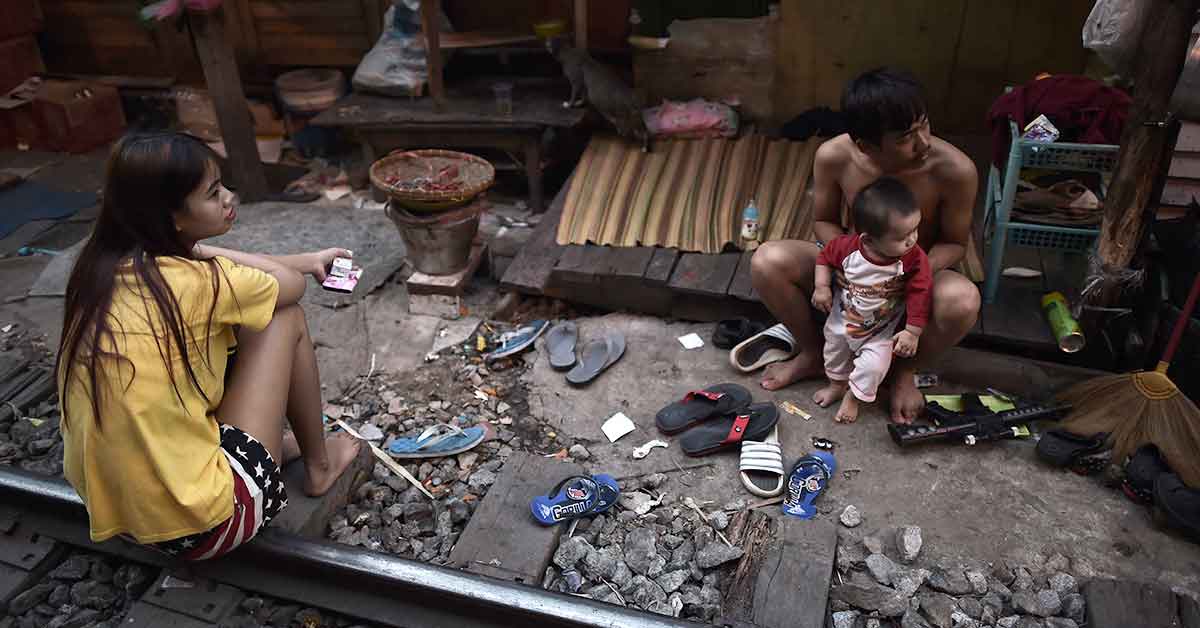Thailand is often pitted as “one of the great development success stories” and this is for fair reason. Poverty in the country has declined substantially over the last 30 years from 67 percent in 1986 to a mere 7.8 percent in 2017, as measured by the upper-middle income class poverty line of US$5.5 per day. While, compared to the earlier decade, the period from 2015 to 2017 experienced slower growth, such a leap in the decrease in poverty should not be ignored.
Nevertheless, this “great leap” in getting people out of poverty is not the only thing that should not be overlooked. While kudos are certainly in order for Thailand in what it’s managed to achieve so far, there are still areas in which adequate attention needs to be given, not least of which is wealth distribution in the country.
According to the Bank of Thailand’s research institute, the Puey Ungphakorn Institute for Economic Research, approximately 36 percent of Thailand’s corporate equity is held by just 500 people compared to the country’s current population of about 69,625,582 people. The institute’s report states that each of these 500 individuals amass some 3.1 billion baht (US$102 million) per year in company profits. This is compared to the average yearly household income of around US$10,000.
It has long been known that only one percent (known as the one percenters) own most of the world’s wealth. This is certainly the case throughout most of the world, the ASEAN region being no different. Nonetheless, in Thailand’s case, this wealth inequality is simply higher.
A report published at the turn of the year by the Credit Suisse Research Institute titled “The Global Wealth Report 2018”, showed Thailand scoring 90.2 on the Gini index. This made it the country with the widest income inequality in ASEAN and one of the four worst performers on a world chart which included Ukraine (95.5), Kazakhstan (95.2), and Egypt (90.9).
The Gini index is a simple measure of the distribution of income across income percentiles in a population. A higher Gini index indicates greater inequality, with high income individuals receiving much larger percentages of the total income of the population.

In Thailand, the distribution of adults by wealth range is heavily concentrated at the bottom end of the wealth spectrum. Precisely, 91.7 percent of adults belong in the under-US$10,000 wealth band, 7.5 percent in the between US$10,000 and US$100,000 band, and 0.7 percent in the between US$100,000 and US$1 million band. Only 0.1 percent are members of the over-US$1 million wealth range. This translates into a high-income inequality value of 90.2 on the Gini index.
Political turmoil
The world is aware that, as far as politics goes, Thailand has not had the smoothest of rides. In fact, many experts agree that Thailand has had more coup attempts than any other country in Asia. Does poverty have something to do with this political instability?
In June, a study by the Asia Foundation called “Thailand’s Inequality: Myths and Reality of Isan” found that Isan – the poorest and most populous region in Thailand – is struggling compared to the rest of the country.
“People in Isan still struggle to make ends meet,” said the Asia Foundation, adding that narrowing this gap between Isan and the rest of the country is key to a richer and “more stable Thailand”.
Along with the far north, Isan has consistently voted for governments with populist policies between 2001 and 2011. These were governments either led by or linked to former Thai prime minister Thaksin Shinawatra and the powerful Shinawatra clan.
Unfortunately, Thailand’s history also paints a bloody power struggle involving protests and two military coups that unseated both, Thaksin and then his sister, Yingluck Shinawatra, in 2014. Several political pundits, in fact, believe that the reason the pro-military government returned to power after this year’s general election was because of help from a new constitution drafted by the junta.
“Research has shown that one of the leading indicators that pushed people toward political turmoil and protest is the fact that they are not satisfied with their economic condition and the uneven treatment that they receive,” said Rattana Lao, lead author of the Asia Foundation’s report.
As mentioned earlier, Thailand has come a long way in terms of fighting poverty in the country. However, income inequality remains a serious challenge in the Land of Smiles and it should go without saying that this has adverse effects on the country as a whole.
The research conducted by the Puey Ungphakorn Institute for Economic Research was based on analysis of 2017 data from the Commerce Ministry on the 2.1 million shareholders in Thai firms. The study was funded by the University of California San Diego.
Related articles:
